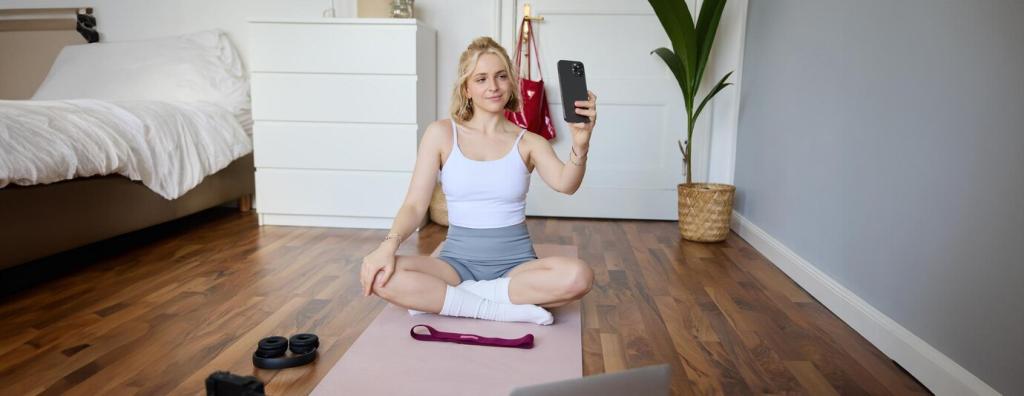Crafting Unique Training Schedules: Build a Plan That Fits Your Life
Start With You: The Foundation of a Unique Schedule
Assess Your Baseline Honestly
List your current fitness, injuries, time windows, and stress levels. A unique schedule respects reality, not fantasy. Share your baseline in the comments and compare notes with readers facing similar constraints.
Define Goals and Non‑Negotiables
Pick one priority goal, set guardrails for family, work, and sleep, and align training around them. Clarity reduces decision fatigue. Subscribe for a weekly goal‑setting checkpoint reminder tailored to adaptable schedules.
Match Training to Your Daily Energy Curve
Notice when you feel most alert and strong. Morning power? Late‑night focus? Align tough sessions with peak energy and move lighter work elsewhere. Tell us your energy pattern to crowdsource scheduling tips.


Time Architecture: Macro, Meso, Micro
Sketch 12–24 weeks with clear phases: build, peak, deload, and consolidation. Mark life events and travel first. Comment if you want a free macrocycle template matched to your primary sport or modality.
Time Architecture: Macro, Meso, Micro
Each 3–5 week block earns a focus—strength, aerobic base, or skill density. Fewer goals, better progress. Share which focus you’ll choose next month, and we’ll recommend a compatible weekly split.
Data Without Drama: Adjusting With Simple Signals
Pick Three Signals You’ll Actually Track
Try RPE after sessions, morning resting heart rate or HRV, and sleep duration. Consistency beats perfection. Comment with your chosen trio to get quick suggestions on how to interpret them.
Trend, Don’t Overreact
One bad night doesn’t cancel a week. Look for three consistent data points before shifting intensity. Readers often report calmer minds using this rule—add your experience below and help others recalibrate.
Pivot Points That Protect Progress
If soreness lingers beyond 72 hours or motivation tanks for a week, swap a hard session for technique work. Ask for our pivot checklist by subscribing; we’ll send the one‑page decision tree.
Maya, the Night‑Shift 10K Runner
Maya anchors speed work after post‑shift naps, keeps long runs on rotating weekends, and uses treadmill strides during stormy nights. Her rule: never stack two red‑zone days. Share your shift‑friendly hacks to help fellow runners.
Jamal, the Hybrid Strength‑Cyclist
Jamal pairs heavy lower‑body work with short Z2 spins, then schedules long rides after upper days. He inserts a deload every fourth week. Curious about hybrid balance? Comment “HYBRID” and we’ll send a sample split.
Ana, the New Parent With 20‑Minute Windows
Ana uses micro‑sessions: ten squats, five pushups, and two minutes of breathing, repeated across the day. Her schedule lives on the fridge. Post your micro‑session recipe to inspire other time‑strapped readers.
Adherence Engineering: Make Your Plan Stick
Pack a minimal gym kit, pre‑load playlists, and place shoes near the door. A 60‑second rule often breaks inertia. Share your one tweak that reliably gets you moving when your day feels heavy.
Adherence Engineering: Make Your Plan Stick
Tie sessions to existing habits: coffee then mobility, commute then intervals, dinner then walk. Quiet rituals beat noisy hype. Subscribe if you want our habit‑stacking guide for different training personalities.

Recovery Scheduling: Rest Like an Athlete
Protect a consistent bedtime and a pre‑sleep routine. Training adapts during sleep, not during spreadsheets. Comment your wind‑down ritual, and we’ll compile reader favorites into a community sleep toolkit.

Recovery Scheduling: Rest Like an Athlete
Light mobility, easy walks, or gentle spins accelerate healing without adding stress. Rate recovery sessions by how refreshed you feel. Subscribe for a recovery playlist and mobility flow curated for busy schedules.
Tools and Templates: Structure Without Rigidity
Color intensity zones, add movable placeholders, and reserve a weekly wildcard slot. Drag‑and‑drop saves plans from falling apart. Want our flexible calendar file? Subscribe and we’ll send the editable version.


Tools and Templates: Structure Without Rigidity
A pen, a pocket notebook, and three daily metrics can outperform complex dashboards. Clarity beats clutter. Describe your tracking setup in the comments and we’ll offer one improvement idea tailored to your goals.
